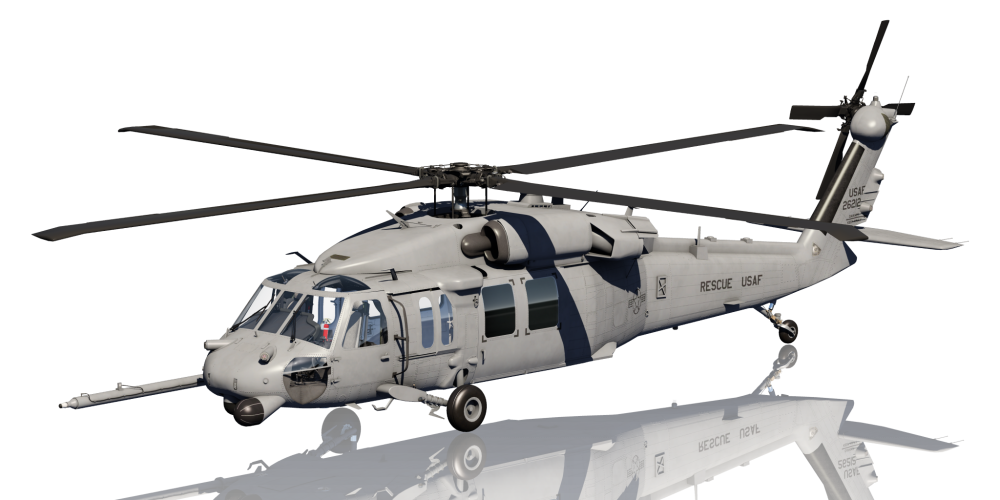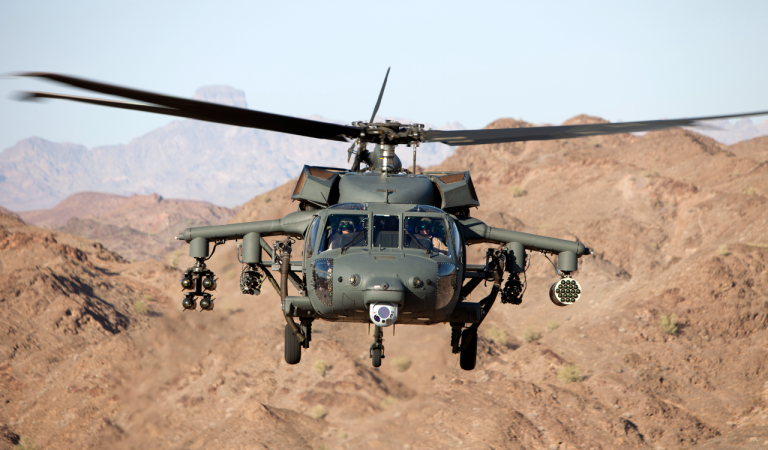The Advancement of the UH 60: From Its Inception to Modern-Day Enhancements
The Advancement of the UH 60: From Its Inception to Modern-Day Enhancements
Blog Article
UH-60: Developments in Modern Helicopter Design
The UH-60 helicopter stands as a criteria in modern-day aviation, showcasing considerable innovations in design and innovation that provide to the advancing demands of armed forces procedures. As we discover the evolution and essential advancements of the UH-60, it comes to be important to think about exactly how these growths affect not just current applications but also the future landscape of helicopter layout.

Development of the UH-60
The advancement of the UH-60 Black Hawk helicopter stands for a considerable milestone in aerospace design and armed forces aviation. Presented in the late 1970s, the UH-60 was developed by Sikorsky Airplane to satisfy the United States Military's requirement for a functional energy helicopter efficient in executing a range of goals. Its style emphasized speed, ability to move, and sturdiness, setting brand-new standards for functional efficiency.
The UH-60 features an unique four-blade blades system, which enhances lift and security, permitting it to operate successfully in varied environments. Its airframe is built from innovative composite materials, adding to a decrease in weight while maintaining structural stability. The helicopter's layout also integrates better the rules of aerodynamics, which enhances fuel effectiveness and raises range.
Throughout the years, the Black Hawk has actually undertaken multiple upgrades to enhance its abilities, consisting of boosted engines, progressed flight control systems, and modular systems for easy maintenance and versatility. The helicopter's capacity to perform objectives ranging from army transportation to clinical discharge has actually strengthened its duty as a foundation of united state military operations. The UH-60 Black Hawk remains a prime example of how development in helicopter style can substantially influence army effectiveness and functional versatility.
Advanced Avionics Solutions
Innovations in avionics systems have actually changed the abilities of contemporary helicopters like the UH-60 Black Hawk, improving operational efficiency and situational understanding (UH 60). The combination of sophisticated avionics enables improved communication, flight, and navigating administration, making the UH-60 much more versatile in varied goal profiles
One of the key attributes is the sophisticated digital cockpit, which uses multifunction screens that offer real-time data, making certain pilots have prompt access to crucial flight details. This streamlining of info minimizes pilot work and improves decision-making processes throughout complicated operations. In addition, the consolidation of general practitioner and inertial navigating systems enables specific positioning and path planning, enhancing mission implementation in challenging settings.
Additionally, advanced avionics systems boost interaction capacities through protected data web links and voice communication systems, allowing smooth coordination with ground forces and other airplane. The combination of automatic flight control systems additionally adds to improved stability and control, particularly in unfavorable climate problems or during low-altitude maneuvers.
Engine and Efficiency Enhancements
Engine performance in contemporary helicopters has actually taken a considerable jump forward, driven by technologies that increase power, dependability, and performance. At the center of these advancements is the adoption of even more effective turboshaft engines, particularly those employing sophisticated products and technologies that allow greater temperature level tolerances and enhanced thrust abilities. The UH-60 Black Hawk, for example, utilizes the T700-GE-701C engine, which features a dual-channel, full-authority digital engine control system. This system improves efficiency while optimizing fuel usage and lowering maintenance requirements.
Additionally, the combination of engine wellness monitoring systems permits real-time diagnostics and predictive maintenance, substantially boosting operational dependability. These systems not just sharp crews to prospective concerns prior to they become important however likewise help with more efficient upkeep organizing, thus reducing downtime.

Materials and Structural Innovations
Recent developments in materials and structural style have actually changed modern helicopter building, improving both efficiency and resilience. click to read The introduction of sophisticated composite materials, such as carbon fiber strengthened polymers, has substantially minimized weight while keeping architectural honesty. This change not just enhances gas performance yet also increases payload capacity, allowing helicopters like the UH-60 to carry out more diverse objectives.
Furthermore, developments in light weight aluminum alloys and titanium elements have added to improved resistance to corrosion and tiredness, extending the life go to this web-site expectancy of vital airframe aspects. The strategic use these materials has actually caused a reduction in upkeep requirements and boosted general functional readiness.

Furthermore, the assimilation of computer-aided design (CAD) and additive production technologies has made it possible for much more light-weight structures and complicated geometries, maximizing the aerodynamic efficiency of helicopter layouts. These developments promote rapid prototyping and production, permitting manufacturers to respond quickly to advancing mission requirements.
Safety And Security and Survivability Features
Safety and survivability features in modern helicopter design have become paramount, mirroring the increasing needs for goal performance in tough settings. The UH-60 Black Hawk, a remarkable instance, incorporates sophisticated innovations to enhance crew and guest defense.
The helicopter likewise employs a ballistic protection system, which includes armored staff seats and essential systems securing, minimizing susceptability to little arms fire and shrapnel. Improved situational understanding is achieved via sophisticated avionics and sensor technologies, enabling pilots to spot and avoid hazards successfully.
Furthermore, the integration of redundancy in essential systems-- such as double engines and multiple trip control channels-- makes certain continued operation even if one system fails. The UH-60 is furnished with sophisticated emergency situation flotation tools, improving survivability in water landings. Jointly, these features not just improve the security of personnel however also boost mission success prices in aggressive atmospheres, showing the commitment to quality in helicopter design.
Final Thought
The UH-60 helicopter stands for a considerable improvement in contemporary air travel modern technology, including cutting-edge products, innovative avionics, and durable security functions. On the whole, the UH-60 serves as a standard for future developments in helicopter design, symbolizing durability and convenience in contemporary army operations.
The UH-60 helicopter stands as a benchmark in modern-day air travel, showcasing considerable improvements in layout and modern technology that provide to the progressing demands of armed forces operations. their explanation As we explore the advancement and vital technologies of the UH-60, it comes to be crucial to take into consideration exactly how these advancements influence not just present applications however also the future landscape of helicopter design.
Presented in the late 1970s, the UH-60 was created by Sikorsky Aircraft to meet the United States Military's requirement for a versatile energy helicopter qualified of carrying out a variety of goals. The UH-60 Black Hawk stays a prime example of just how advancement in helicopter style can significantly influence armed forces efficiency and functional versatility.
In general, the UH-60 offers as a criteria for future developments in helicopter layout, symbolizing resilience and convenience in contemporary military procedures.
Report this page